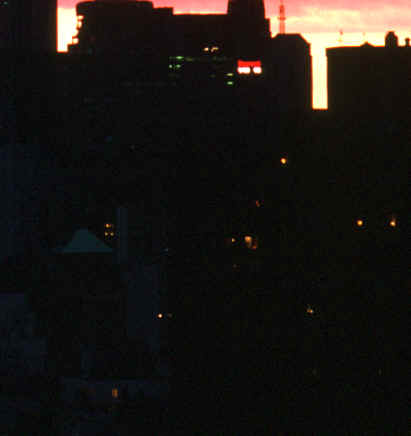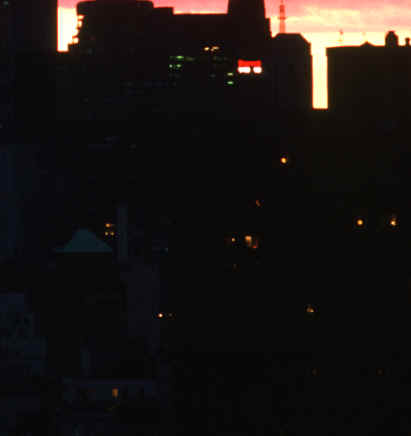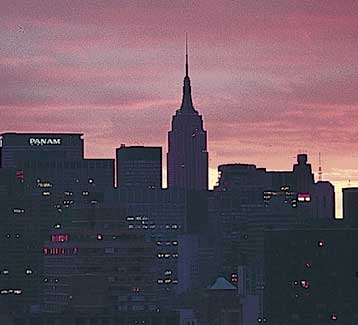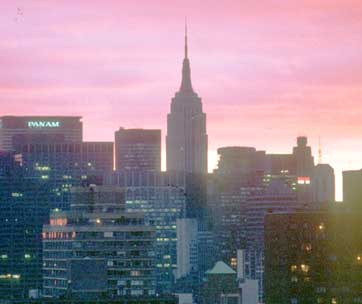
The single pass scan exhibits extensive degradation due to noise. This is typical of output from a good scanner without multi-sampling.
Detail from Midtown Images
At 16x the LS-2000 images the shadow area with remarkably little noise. In my opinion, few other consumer desktop CCD scanners, if any, would have done as well. A Nikon representative told me that their engineers claim that using 16x multi-sampling effectively boosts the D-Max to 3.8.
To see detail more clearly you may have to increase monitor brightness to maximum.
 |
The single pass scan exhibits extensive degradation due to noise. This is typical of output from a good scanner without multi-sampling. |
 |
16x multi-sampling is effective at eliminating noise and clearly imaging dark area detail. |
The same as above but scanned at 2700 dpi shows essentially the same detail.
 |
 |
 |
By modifying the tonal scales of the samples, the shadow areas of the drum scan, left above, and the CCD scanner, right above, are more easily compared. Note how the structure of shadow detail in the drum scanner image remains intact.